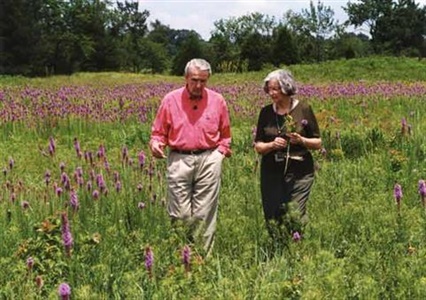Originally named the Arkansas Environmental Preservation Commission (AEPC), the ANHC grew out of Act 112 of 1973. Since that time, the ANHC has benefited from the leadership of many governors and legislators, including today’s Gov. Asa Hutchinson and our current legislature.
Former U.S. Sen. Dale Bumpers was a supporter of the AEPC from its very beginning. He spoke at the Commission’s first meeting, commenting that “I am not going to speak at length about how important I consider the Arkansas Environmental Preservation Commission. All of you realize that this endeavor is of great significance in preserving the very best of Arkansas for our grandchildren and great-grandchildren, as well as for ourselves.” Minutes of the Arkansas Environmental Preservation Commission meeting, September 7, 1973.
The enabling legislation of the AEPC provided for an inventory to identify sites illustrating the range and diversity of the state’s natural environment. Bumpers’ desire was to create an organization that would protect these ecologically important sites for this and future generations.
During that first meeting of the AEPC, Bumpers spoke about his vision for the future of the AEPC and of its value to current and future generations.
“ . . . history has treated very well those who had visions and who tried to implement them with laws and rules. I would expect that someday, for example, Pinnacle Mountain will be a State park. It lies outside the congested part of the metropolitan area of Little Rock; and someday, perhaps not in my lifetime or in yours, people will be glad that somebody had the vision to set this land aside as a State park. If this doesn’t happen, Pinnacle Mountain probably will be engulfed by urbanization. All of you who have been to cities such as New York, Chicago, and Boston have seen Central Park, Lincoln Park, Grant Park, and Boston Common. These parks are situated in the midst of congested cities, and you know that somebody had to have a vision back when it was not very popular or meaningful. This is the way I visualize your duties – to try to be visionary enough to know what is going to be important years and years into the future.”
The name of the AEPC was changed to the Arkansas Natural Heritage Commission (ANHC) with Act 227 of 1975, which also gave the ANHC the ability to acquire and manage land, creating a state System of Natural Areas. Singer Forest Natural Area, donated by the Singer Company of Trumann, became the first natural area that same year.
After leaving the governor’s office, Bumpers served as a U.S. Senator from 1975 to 1999. Many successful conservation efforts within the state are attributed to his leadership.
“After joining the United States Senate, he helped the rest of the country understand that Arkansas’s unique wilderness areas and scenic rivers were national treasures and should be protected as part of the heritage of all Americans. Some great men are remembered for what they create, but we will always remember Sen. Bumpers for what he ensured would remain,” Chris Colclasure, director of the ANHC, said. (Source: About Senator Dale Bumpers, White River Wildlife Refuge)
As governor, Bumpers invested more money in Arkansas State Parks than had been spent prior to that time combined. He successfully worked to stop the channelization of 232 miles of the Cache River and its tributary, Bayou DeView. Bumpers began working to protect and restore the Arkansas Delta wetlands long before others became aware of their value. He played a pivotal role in creating the 80-mile corridor connecting the Cache River and White River refuges. The White River Wildlife Refuge was later renamed to honor him and his work to protect our state’s natural beauty.
In 1988, H.E. Flanagan Prairie Natural Area, in Franklin County, was added to the state System of Natural Areas. The former First Lady Betty Bumpers grew up in Franklin County and the natural area is named for her father H.E. “Babe” Flanagan, who once owned the property. Today it is one of the few remnants of the more extensive Cherokee Prairie Complex that formerly occupied approximately 135,000 acres of the western portion of the Arkansas Valley.
“The prairie was the childhood playground of my wife Betty. Her father, Babe Flanagan, owned this meadow for six decades and all that time, the land was never plowed,” former U.S. Sen. Dale Bumpers said of H.E. Flanagan Prairie in the video “Arkansas’ Natural Heritage”.
In 1999, Bumpers narrated a 30 minute documentary produced by the Arkansas Educational Television Network (AETN) entitled “Arkansas’ Natural Heritage”. The program highlights the uniqueness and value of Arkansas’s natural areas, including H.E. Flanagan Prairie Natural Area. Watch the video on our YouTube Channel.
